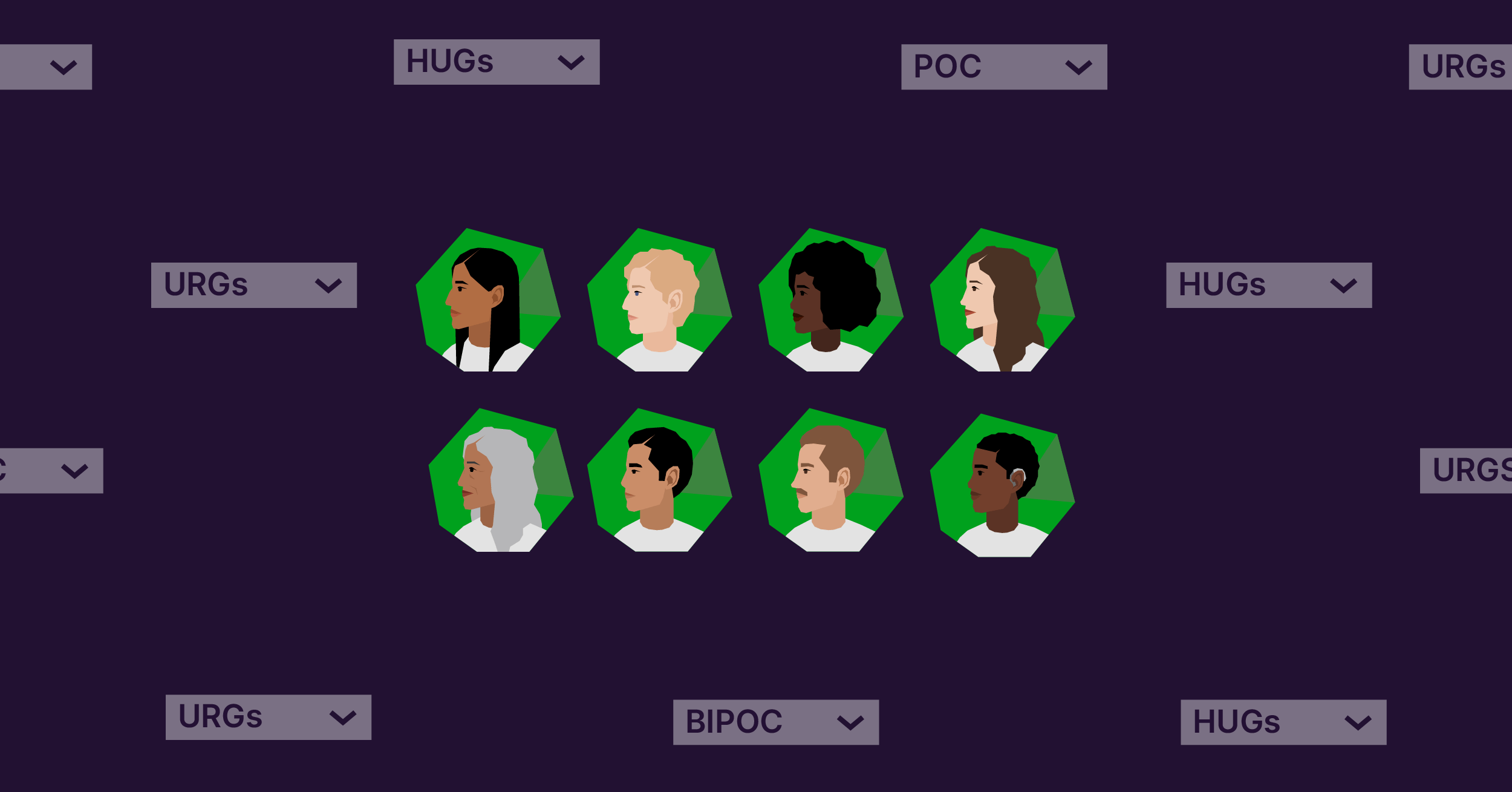At Syndio, we believe that language matters and that it should evolve. That’s why today we wanted to tell you about a change we are making to the default race/ethnicity umbrella terms in our Workplace Equity Analytics Platform that enables customers to choose what best reflects their organization.
Change driven by the desire for inclusivity and fairness
Race and ethnicity categories or designations can be many things to many people, in some instances positive and in others negative. They can represent self-identity, power, prestige, pride, bias, standing, class, stature, stereotypes, an imagined or imaginary place in the world or society, and myriad other things.
Labels are ubiquitous in our lives. We use labels as shorthand, to describe groups of people we believe fit together according to our needs, our perceptions, or our beliefs.
Many of us are familiar with terms such as “minority,” which in the U.S. is used to refer to Asian, Black or African American, Hispanic or Latino, Native Hawaiian or other Pacific Islander, and American Indian or Alaska Native people. The term is a catchall used in comparison to the “majority”; i.e., anyone who identifies as white (not Hispanic or Latino). This language frequently appears in legal contexts and, for that reason, was incorporated into Syndio’s PayEQ®product. For example, federal contractors will be familiar with the term “minority” as it appears in the OFCCP’s regulations. The EEOC also uses it.
Another label used to compare groups of people is “non-white,” which we’ve heard from our customers can be demeaning to those often classified within this category.
These terms “minority” and “non-white”, while common in our daily lexicon, are becoming outdated and may not align to the terminology used by organizations. Syndio customers tell us they want the ability to share information in the platform with colleagues and stakeholders without having to edit the terms “minority/majority” in screenshots. Most importantly, our customers want the language in Syndio’s platform to be inclusive and to provide the flexibility to group employees based on how they identify themselves.
For these reasons, we are offering more language choices to customers. This desire to be inclusive aligns with Syndio’s mission to help companies achieve workplace equity. The new language options are not intended to be a solution to the complexity of identifying or classifying protected categories. Instead, we think of the update as a tool to provide options around evolving language for group identities.
New terms in Syndio’s Workplace Equity Platform
Moving forward, Syndio customers will be able to choose their preferred term when referring collectively to all the races/ethnicities as defined by the EEOC other than “white” when using that group in comparison.
This combined population includes all of the following EEOC designations together:
- American Indian or Alaska Native
- Asian
- Black or African American
- Hispanic or Latino
- Native Hawaiian or Other Pacific Islander
- Two or more races
The preferred term will be used in “White vs. [chosen word]” comparisons and wherever referenced in the Syndio interface and reporting.
What are the new label options?
Terms currently available within our Workplace Equity Platform and their meanings include:
- BIPOC (Black, Indigenous, and People of Color): This term has increased in use and awareness since 2020. BIPOC is meant to emphasize the particular hardships faced by Black and Indigenous people in the U.S. and Canada. It consciously separates Black and Indigenous from the more general term of People of Color to acknowledge the unique struggles that Black and Indigenous people have experienced in the U.S. and Canada.
- HUGs (Historically Underrepresented Groups): This term refers to groups who have been denied access and/or suffered past institutional discrimination in the United States and, according to the Census and other federal measuring tools, includes African Americans, Asian Americans, Native Americans, and people of Hispanic or Chicano/Latino origin
- POC (People of Color): This term does not necessarily refer to biological or scientific distinctions between people, but can refer to common experiences of oppression. This in no way diminishes specific cultural or racial identities; rather it is an affirmation of the multiple layers of identity unique to every individual.
- URGs (Underrepresented Groups): This terms refers to a group that is less represented in one subset (e.g., employees in a particular sector, such as IT) than in the general population.
- Non-White / Minority: Syndio continues to make this term available for organizations that want the option to use it and for compliance reporting, such as AAP/EEO.
Remember: labels are imperfect and will continue to evolve
Any umbrella term is somewhat problematic, erasing individual attributes and experiences. Are the experiences of a person with Asian ethnicity similar to those of a Black employee? Do Hispanic/Latina women have a different experience than Hispanic/Latino men? Do all employees who identify as Asian have the same experience? Of course not. The same question can be asked of other groups included beneath the umbrella of these terms. Furthermore, they can mask when one group is impacted more than another.
For this reason, Syndio customers have the flexibility not only to run BIPOC versus white analyses, but also separate group and subgroup analyses, such as white versus Asian, and also look at intersectionality.
Additionally, while race/ethnicity analyses are common in North America, race/ethnicity self-identification information is not commonly tracked, is considered sensitive, and is not analyzed as often in other places around the globe. There is no global consensus on an umbrella term. Labels such as POC and BIPOC are U.S.- and Canada-centric and may be unfamiliar or unlikely to be used in other parts of the world. They may also ignore existing differences within racial/ethnic categories around the globe.
Context must always be considered when assigning labels because what might be appropriate in one situation may not be fitting in another. Where possible, it is better to defer to specific labels in describing protected categories.
While the new labels in Syndio’s platform are an improvement over terms “minority” and “non-white,” and provide a more convenient way to talk about groups of people, they remain nuanced. Broad classifications of people are dynamic, subject to change, and never completely accurate for everyone in the group. Language will continue to evolve. Syndio will continue to listen to customers and to update the language in our product accordingly.
The information provided herein does not, and is not intended to, constitute legal advice. All information, content, and materials are provided for general informational purposes only. The links to third-party or government websites are offered for the convenience of the reader; Syndio is not responsible for the contents on linked pages.


